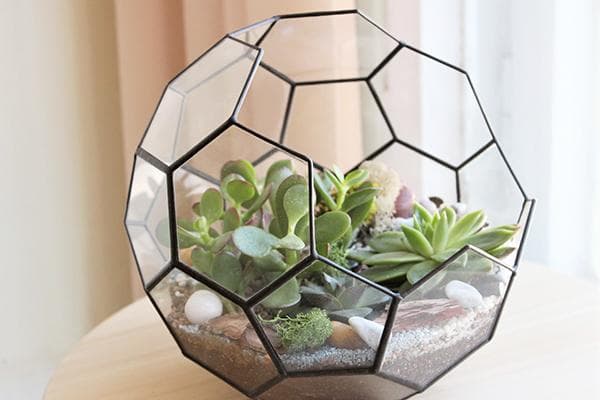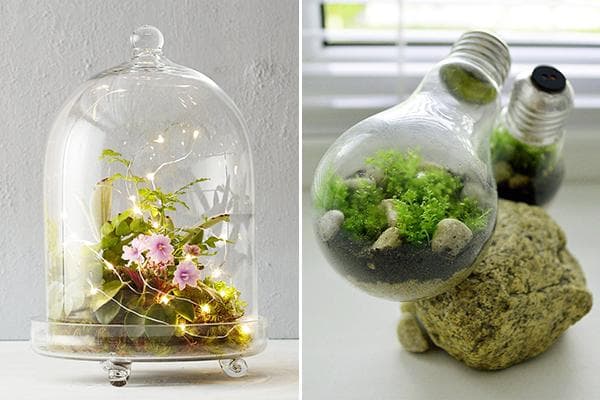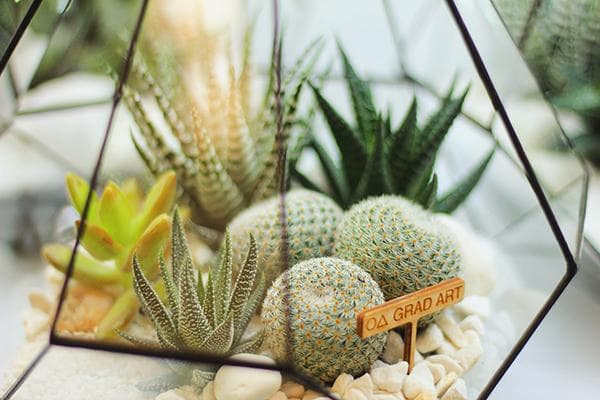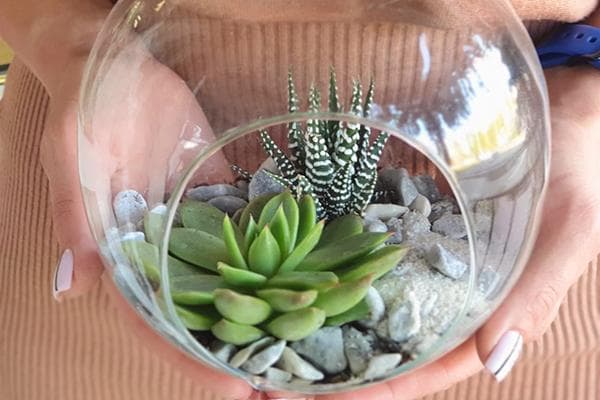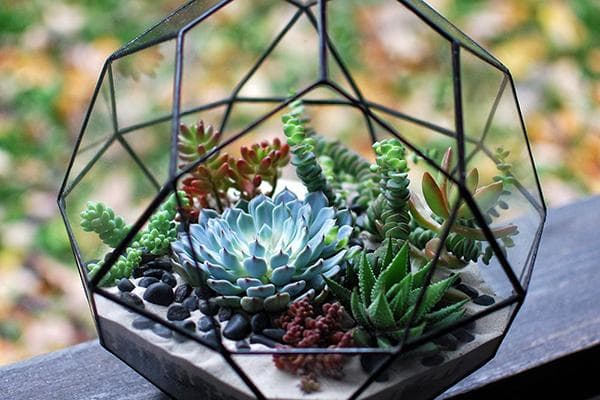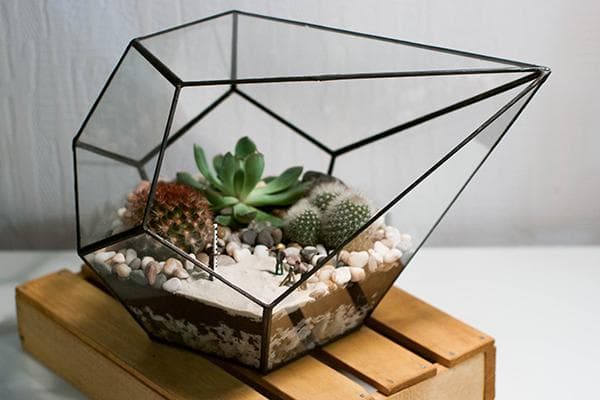Florarium for beginners: how to make it and what plants to choose?
A florarium can be called a miniature greenhouse. Today, compositions of living plants in a glass vessel are at the peak of popularity. A beautifully designed florarium can decorate any interior and give it individuality. The shape and size of the vessel may be different, but the type of structure determines what plants can be grown in it. A florarium can be made at home without any special skills.
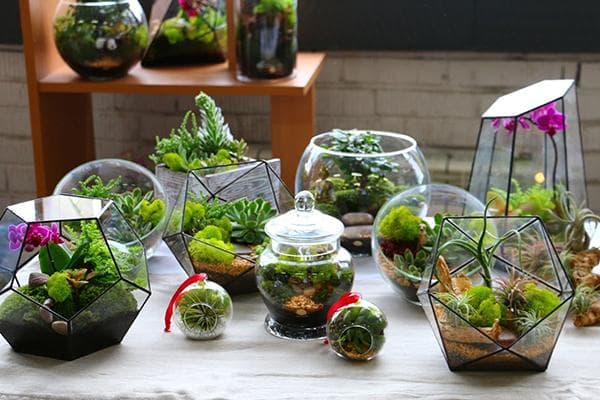
Types of florariums
Before creating a florarium, you first need to decide on the size of the composition and its location.
Florariums can be:
- desktop;
- floor;
- hanging;
- built-in
According to the principle of construction, mini-greenhouses are divided into two types - open and closed.
In a classic closed florarium, the air is isolated from the air in the room. Thanks to this, favorable conditions for plants are created inside with optimal temperature and humidity. Sometimes dry gardens are created in isolated vessels that do not require watering.
Open florariums are a little more common. In this case, plant compositions are created in an aquarium, glass or other container. Plants are located on the bottom, without going beyond the container; they can be planted in groups or in a single copy.
How to make a florarium yourself?
Having decided on the type of florarium, it’s time to start making it. You can take a ready-made vessel and simply fill it with the selected plants. A mini-garden is created in a round or rectangular aquarium, a container for an artificial pond, a glass bottle or jar of an unusual shape, a transparent vase, a glass teapot. If you want to create an original design, you can make a vessel with your own hands.
DIY geometric florarium
Today, geometric florariums are in fashion. You can order them online, and if you want to save money, make them yourself. The material used is ordinary window or baguette (thinner) glass.
Step-by-step instructions for making a geometric florarium:
- Make templates of the desired shape and size, according to which glass polygons will be cut. The most commonly used shape is a pentagonal one.
- Cut out parts according to templates. You can contact the nearest workshop that cuts glass.
- Cover the edges of the blanks with copper tape, trying to act carefully.
- Carry out assembly, fastening the parts together using tin soldering.
- Patina the seams using gold, black or silver patina for decoration.
A simpler manufacturing option involves replacing glass with plastic. Instead of soldering, in this case superglue will be used. The parts are first secured with tape and then carefully glued together. You can decorate the seams with colored varnish.
It’s easy to find a video on the Internet with a master class on how to make a geometric florarium yourself. Such a mini-garden is usually of an open type, which simplifies caring for plants.
Creation of an indoor florarium
In a closed florarium, plants do not require any care, but this has its own difficulties. When creating a sealed structure, it is very difficult to calculate the number of plants and other parameters that will allow a closed ecosystem to exist for a long time without outside interference. Therefore, life in sealed vessels often quickly extinguishes. This option is not suitable for beginners.
The florarium may have a removable lid or be a glass tray with a transparent dome. Such a mini-garden is occasionally moistened with a microscopic amount of moisture.
A florarium with succulents, made in the form of a coffee table with a glass top, looks original in the interior. It is best to make a structure from coniferous wood, which is lightweight, has phytoncidal properties, and is easy to process.
You will need boards 25–30 mm thick and bars of the required size for making the legs. The function of the tabletop will be performed by acrylic glass. You can give it the required dimensions right in the store (this service is usually provided). This material is relatively expensive, and it is better not to take risks by cutting it yourself.
Plants for florarium
Decorative low-growing species are selected for growing in a glass vessel. Plants for the composition can be selected based on the principle of contrast (in size, leaf color). In small containers, only one relatively large plant is often planted, with other vegetation serving as the background. Moss and ground cover plants can be used as a green “lawn” (soleirolia, callisia, nertera, tradescantia are suitable).
Typically, a mini-garden is created from slow-growing representatives of the flora no more than 10–15 cm in height.Specimens with large leaves will look cramped, and fast-growing flowers will have to be replanted soon.
For mini-gardens they often use:
- cacti and other succulents;
- miniature species of ferns;
- selaginella;
- Saintpaulia;
- fittonia;
- lithops;
- mosses.
When creating a florarium, they are guided by the rule: leave at least half of the volume empty.
Moisture-loving flowers for which the room conditions are not suitable are planted in a closed vessel. An outdoor miniature greenhouse can provide ideal conditions for growing orchids.
Planting plants in a florarium: step-by-step instructions
Before creating a miniature greenhouse, you should think about planting in advance, prepare a vessel and the necessary tools. The glass container is thoroughly washed with soapy water and wiped dry. Now the florarium can be filled:
- The first layer is drainage (pebbles, sand, small stones). The drainage material must first be boiled, then it is laid in a layer 3–4 cm thick.
- Then they lay out their charcoal 1 cm thick. Its role is to destroy unpleasant odors, bacteria, and prevent the development of fungal spores.
- Sand mixture is used as a substrate for succulents, and pine bark for orchids. For other plants, regular flower soil will do. The substrate should also be disinfected using heat treatment. The thickness of this layer should be at least 5–6 cm so that the roots of the flowers can develop.
- Before planting, the plants are removed from the pot. The roots are cleaned, shaking off the soil from them, and trimmed a little. When planting cacti, you need to wear protective gloves.
- Make holes in the soil using a regular tablespoon and plant a flower. This is done with all plants.Add some soil to the root zone and compact it.
- After planting, they begin to decorate the composition. Live or dried moss, figurines of animals and birds, colored glass balls, beautiful stones, and driftwood are added to the vessel. You need to ensure that the decor is not overloaded.
- The walls of the container are wiped to remove any adhering soil.
- Then the miniature garden is watered with a syringe, pouring liquid in small portions. For irrigation, filter or melt water should be used.
Subsequently, the plants are watered every 2 weeks in the summer and once a month in the winter. Overgrown flowers are transplanted into pots, and miniature specimens are planted in their place.
Each florarium is unique - you will not be able to find two completely identical specimens. That is why miniature gardens are popular among decorators. Thanks to the possible replacement of elements of the composition, you can change its appearance at any time as you wish. The finished florarium requires almost no maintenance and at the same time provides great aesthetic pleasure.

